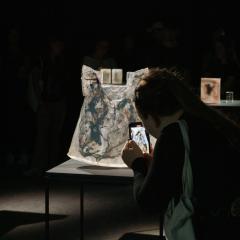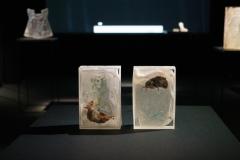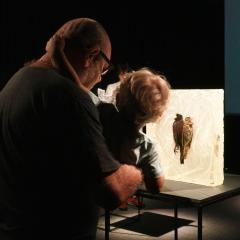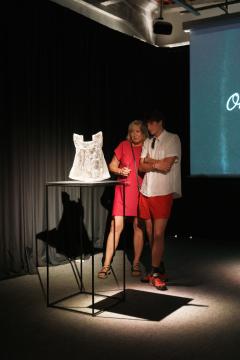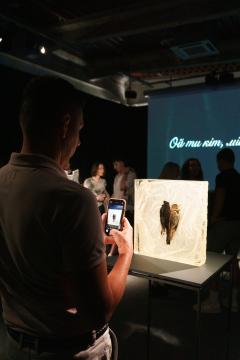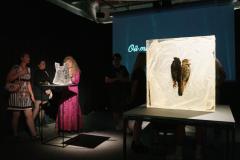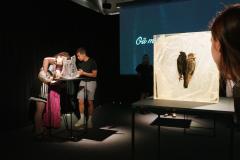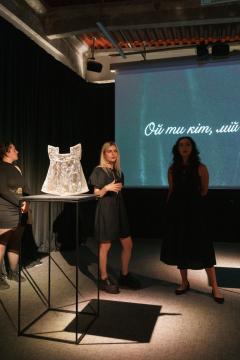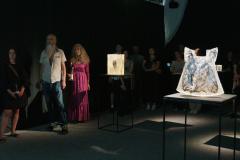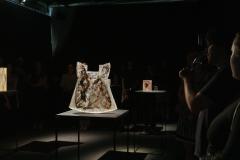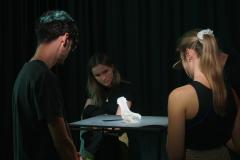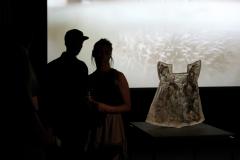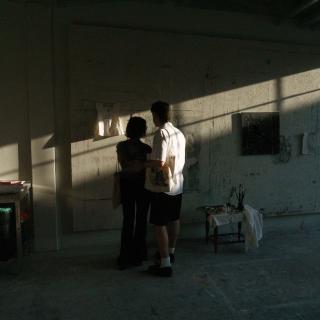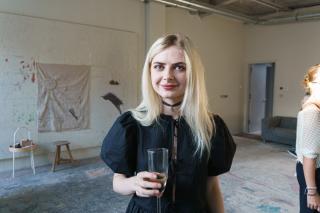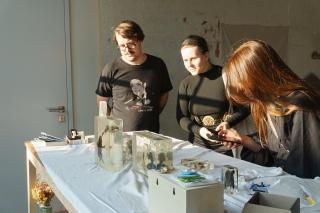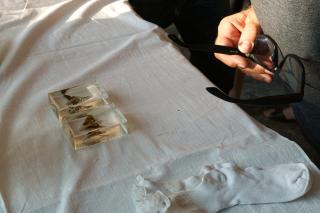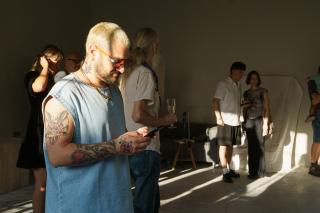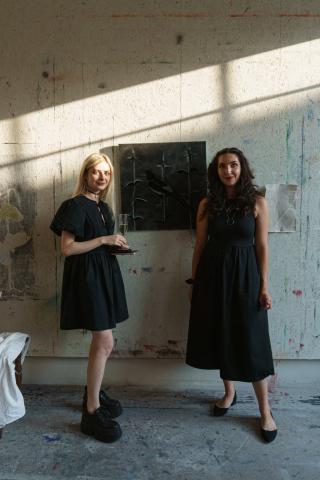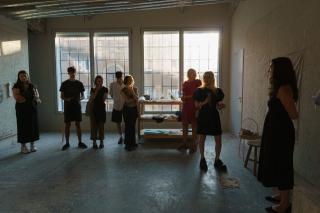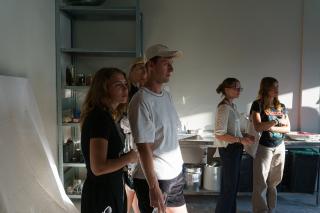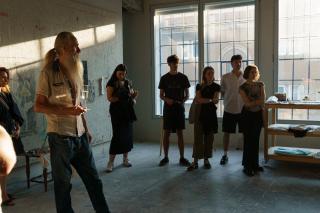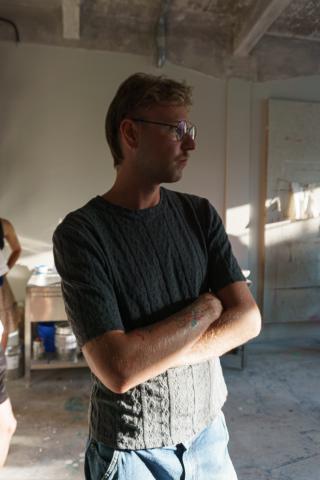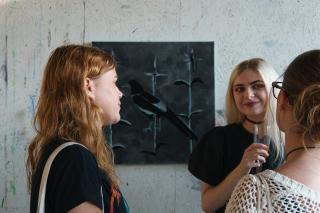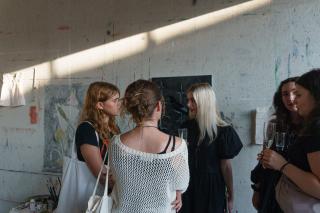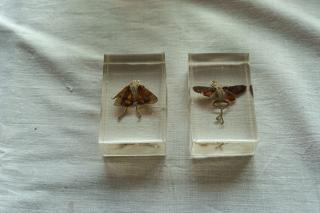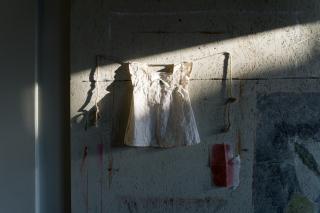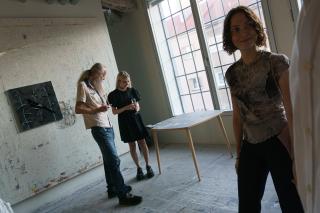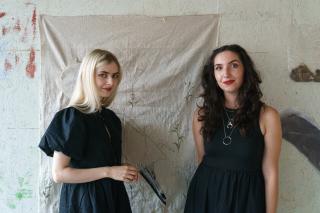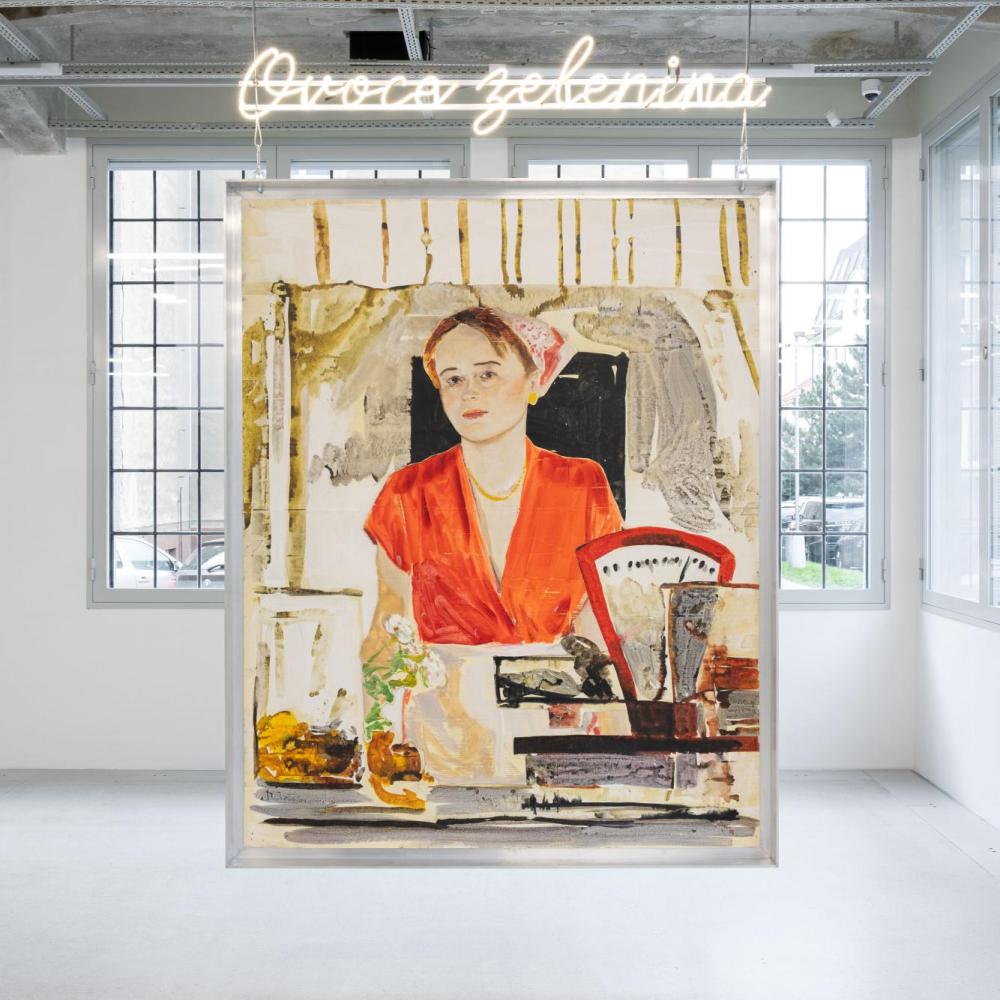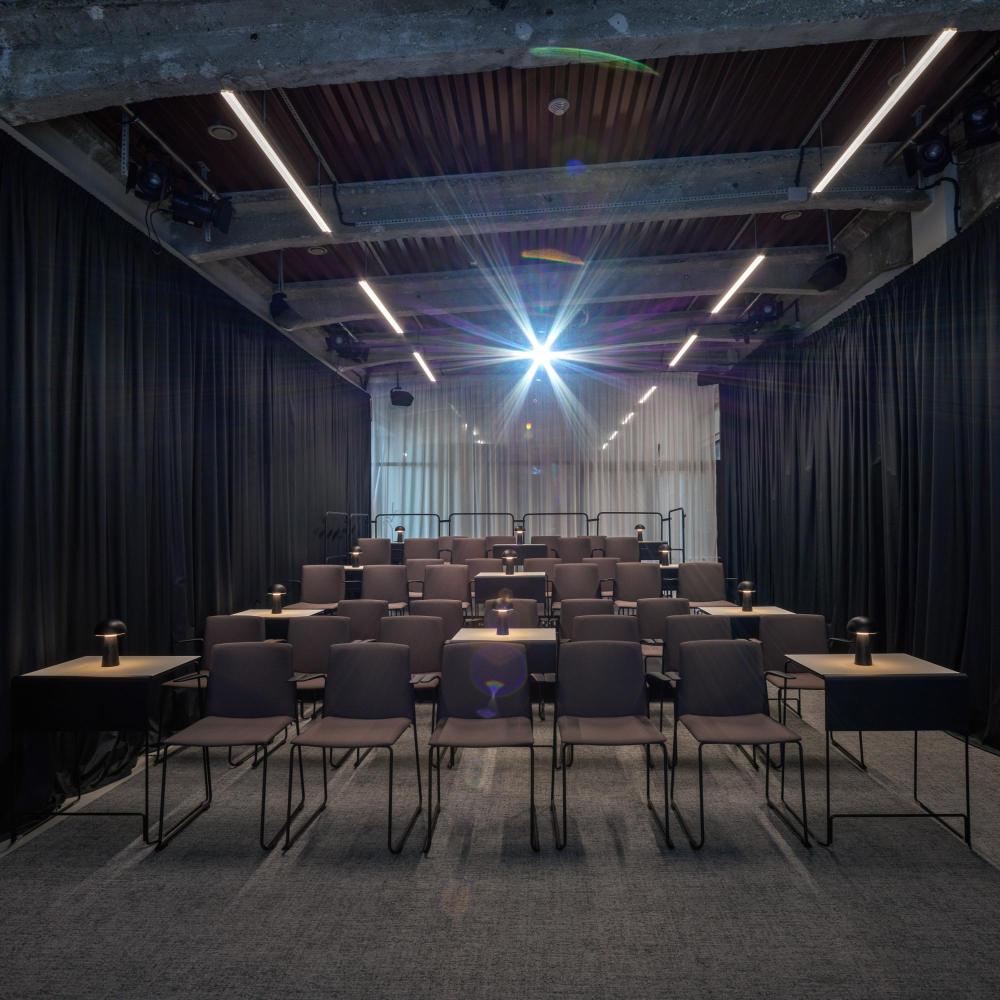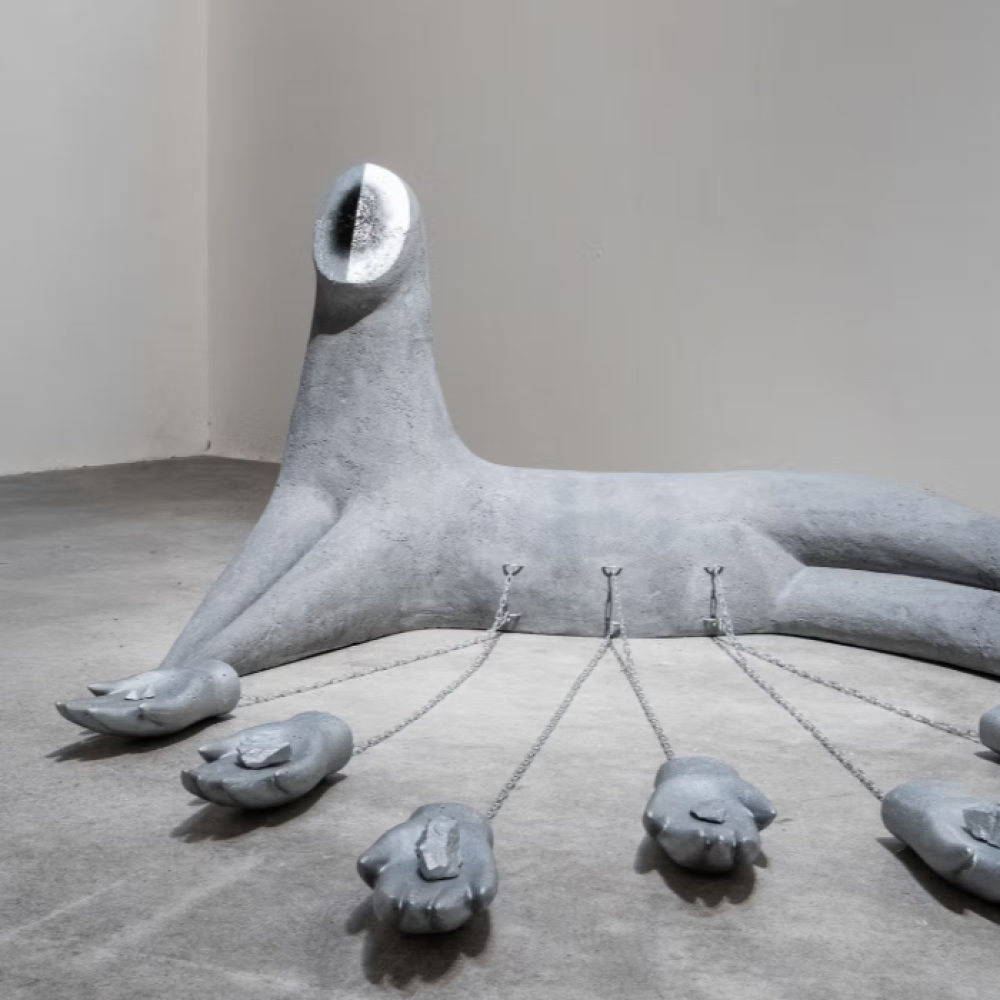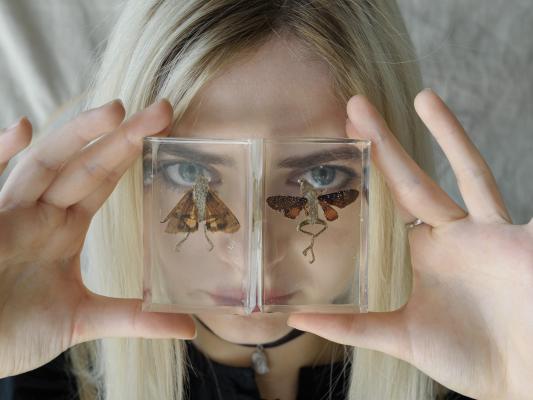
Margarita Ivy (*1998) is a multimedia Ukrainian artist living in the Czech Republic. Ivy reflects on questions about life and death, about the predetermined death of every living being. She interprets the borderline existential questions through romanticizing compositions of epoxy objects. Deceased animals, often found in nature and in the city, are preserved and protected from biological processes. He keeps some of them for years in containers of formaldehyde before deciding to encase them in epoxy forever. Often she attaches pieces of fabric with traditional Ukrainian embroidery, which reminds the artist of her family's tradition of using embroidery on clothing or bedding. She links the theme of mortality with the memory of place - in her thoughts she returns to her native Zaporozhye, recalling the stories of her grandmother and the history of her family.
She spent two months in residence at Telegraph, and then presented her work imbued with mortality in the exhibition Confession.
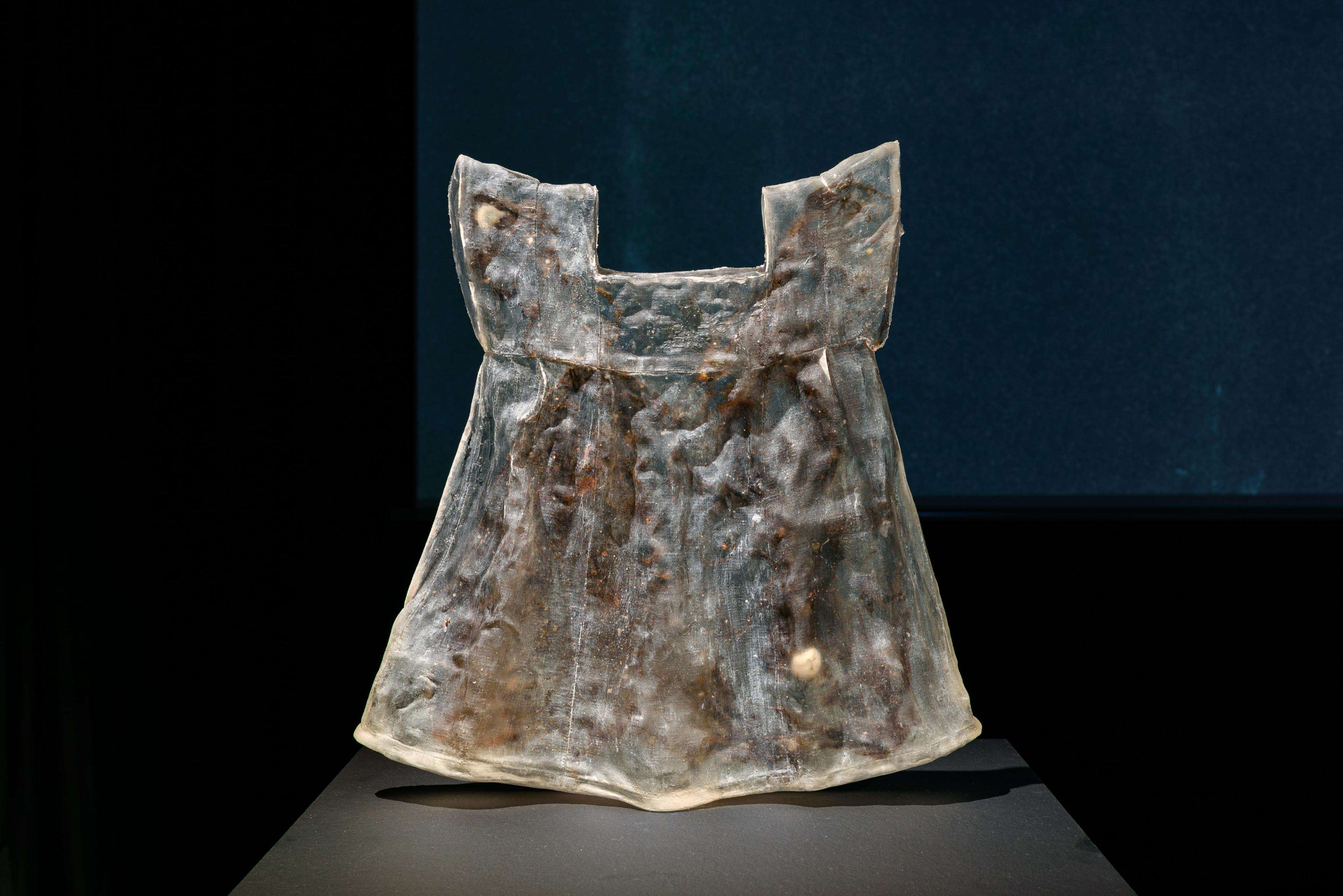
You spent two months in residency at Telegraph. During your stay, the Confession exhibition took place, showcasing works created during your residency as well as your film, made as part of your bachelor's thesis in 2023. The film is a narration about childhood and also a partial explanation of your work for unfamiliar viewers. What was the theme of your bachelor's thesis, and what is the film about?
In my bachelor’s thesis, I dealt with the theme of collective and transgenerational trauma in Ukraine. Through the stories of my ancestors, I examined the impact of trauma on their perception of the world. Using the story of one family, I open the topic of the collective trauma of the Ukrainian nation, point to the repetition of history, and attempt self-reflection within today’s history. Our grandmothers and great-grandmothers were taught not to speak out loud about trauma. Their ability to survive tragedy was passed down as heritage to the next generations through upbringing, hidden patterns, and fairy tales. In the short film “ой, ти кіт, мій муркіт,” I illustrate memories of my grandmother and my home. They are naturally distorted, both real and fairy-tale-like at the same time.
The central piece of the exhibition, quite unusual in the context of your work, was an epoxy object in the shape of children's clothes. What do these clothes symbolize?
The object, titled Memories, is a cast of my childhood dress. It embodies my childhood memories and dreams, which are somewhere in memory and the subconscious and are difficult to grasp. Hidden inside the transparent dress are various stories and creatures – a fragile cobweb from my old studio, dragonflies, an empty shell, a small bird’s egg. It’s an attempt to grasp something that is already gone, memories and dreams that cannot be fully recalled, but probably make up my identity.
In the compositions of your objects, you often include fabrics with embroidery which comes from traditional Ukrainian embroidery. What is depicted in these embroideries? Is this tradition also typical for your family?
My main inspiration comes from Ukrainian folk embroidery dedicated to the deceased. The tradition has transformed, and nowadays it exists in the form of embroidered or printed towels with Ukrainian ornaments or prayers. During my visits and consultations at the Museum of Folk Art in 2021, it became clear that embroidery used to be something everyone did—it was automatic, regardless of one’s skill in the craft. Post-mortem embroidery had a different function – during the process, the close person or the parent of the deceased would pray and remember the lost one. This ritual allowed them to process the loss and their pain. The pattern I use most often, and which historians say is indeed a post-mortem embroidery, contains motifs of withered flowers or trees.
In our family, embroidery was always present—maybe not in the traditional form, but embroidery as a craft was still there, as was sewing itself. In my grandmother’s apartment were several sewing machines. For a while, knowing how to sew was the only way to have something nice to wear. Later, sewing became more delicate – for example, my mother often decorated my dresses with embroidery or made my bedding and other items.
You mentioned that you sometimes work with animals only after several years. When is the right time? Why are some animals left aside for a long time?
I would describe my creative process as being connected to certain phases of grieving. When I first “meet” a deceased animal, the emotions are very intense. I need to experience, process, and let the story of the animal settle. This is also related to the technical part. Once I place the animal in a formaldehyde “bath,” it can stay there as long as it takes until the right moment comes. Recently, I’ve been going through a phase where I often dream about birds. I’ve been studying specific species a lot, and sometimes a particular piece of information affects me so deeply that it determines how the artistic representation will look.
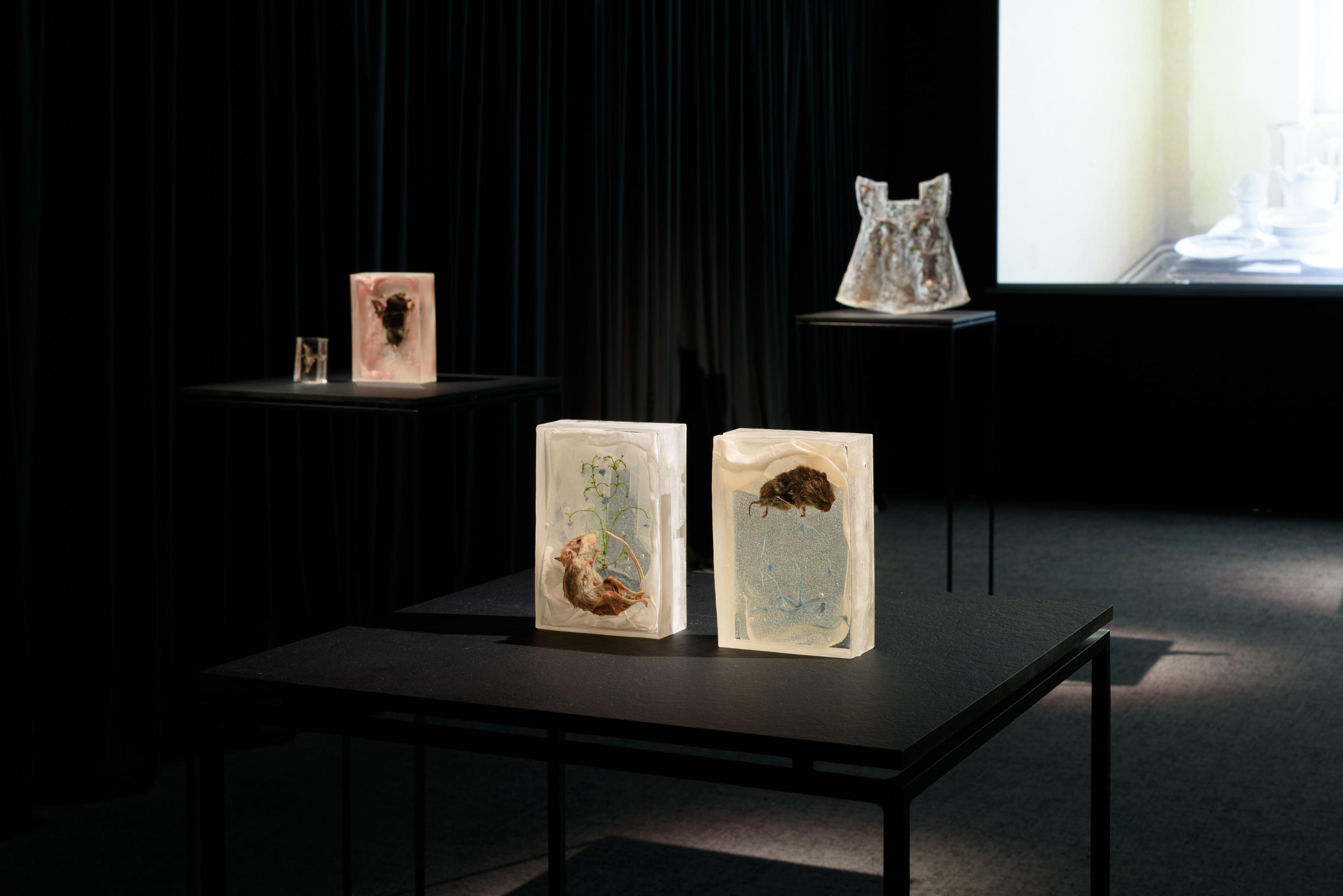
I would describe you as an artist who preserves stories. Can you recall the story of an animal that stuck with you?
A little fox cub that was hit by a car. It was about five weeks old and still had blue eyes. Foxes are very kind and caring parents. At this age, the mothers begin taking their young on short walks…
You have a very close relationship with animals, and you have kept mice, birds, frogs, and other animals yourself. How do you experience their death and the subsequent preservation of their bodies and stories in your artworks?
It’s hard. But I’ve learned from the mice that the cycle is natural and normal. Since they lived for about two years, I watched them from their youth to their old age. It goes by so quickly that you notice the change. But in such a short time, they manage to form their own relationships—in a group, each mouse may have a “best” friend. I honestly admit that with most mice, it’s often necessary to make the decision about the end of their life yourself. They often suffer from cancer. When the animal is suffering, you have to keep your distance and decide that it’s time to have it put to sleep by the vet. It’s even harder because I leave the body in formaldehyde until I can come to terms with the pain and consciously return to it.
Your work is intertwined with death. You often mention the legacy of your grandmother, whose life was very difficult, with death being omnipresent. How do you personally view death?
I’m at a point where I cannot give a clear answer to this question. I can only say that my perception is very sensitive, and I’ve been trying to come to terms with death my whole life. In reality, where I see names or sometimes just numbers of deceased people every day, I’ve hit a dead end. The recurring story has only shown me that my grandmother’s view is still very relevant today.
